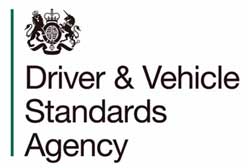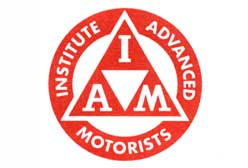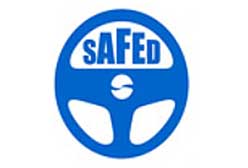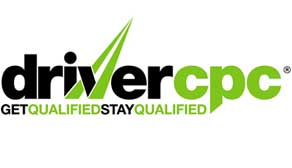

B+E Car and trailer training, trailer towing training, caravan towing, car and trailer test, trailer towing assessments and 4x4 Off-road towing skills.
B+E Car and Trailer training.
The B+E Car and Trailer towing.
Safety questions for car and trailer drivers.
Q1. Open the bonnet, identify where the brake fluid reservoir is and tell me how you would check that you have a safe level of hydraulic brake fluid.
Identify reservoir, check level against high/low markings.
Q2. Show me how you would check that the direction indicators are working.
Apply the indicators or hazard warning switch and check the functioning of all indicators.
Q3. Tell me the main safety factors involved in loading this vehicle.
The load should be distributed evenly throughout the trailer. Heavy items should be loaded as low as possible so that they are mainly over the axle(s).
Bulkier, lighter items should be distributed to give a suitable 'nose weight' at the towing coupling. The nose weight should never exceed the vehicle manufacturer's specifications.
Q4. Tell me the main safety factors involved in securing a load on this vehicle.
Any load must be carried so that it does not endanger other road users. It must be securely stowed within the size and weight limits for the vehicle. The load needs to be secure so that it cannot move or fall from the vehicle when cornering or braking.
Q5. Show me how you would check that your vehicle and trailer doors are secure.
Physical checks should be made to ensure that windows, roof light and all doors, including cargo doors, are properly closed.
Q1. Tell me how you would check the tyres to ensure that they have sufficient tread depth and that their general condition is safe to use on the road.
No cuts and bulges, 1.6 millmetres of tread depth across the central three quarters of the breadth of the tyre and around the entire outer circumference.
Q2. Show me how you would check that the horn is working (off road only).
Check is carried out by using the control (turn on ignition if necessary).
Q3. Tell me the main safety factors involved in loading this vehicle.
The load should be distributed evenly throughout the trailer. Heavy items should be loaded as low as possible so that they are mainly over the axle(s).
Bulkier, lighter items should be distributed to give a suitable 'nose weight' at the towing coupling. The nose weight should never exceed the vehicle manufacturer's specifications.
Q4. Tell me the main safety factors involved in securing a load on this vehicle.
Any load must be carried so that it does not endanger other road users. It must be securely stowed within the size and weight limits for the vehicle. The load needs to be secure so that it cannot move or fall from the vehicle when cornering or braking.
Q5. Show me how you would check that your vehicle & trailer doors are secure.
Physical checks should be made to ensure that windows, roof light and all doors, including cargo doors, are properly closed.
Q1. Open the bonnet, identify where you would check the engine coolant level and tell me how you would check that the engine has the correct level.
Identify high/low level markings on header tank where fitted or radiator filler cap, and describe how to top up to correct level.
Q2. Show me how you would check the parking brake for excessive wear.
Demonstrate by applying parking brake that when it is fully applied it secures itself, and is not at the end of the working travel.
Q3. Tell me the main safety factors involved in loading this vehicle.
The load should be distributed evenly throughout the trailer. Heavy items should be loaded as low as possible so that they are mainly over the axles. Bulkier, lighter items should be distributed to give a suitable 'nose weight' at the towing coupling. The nose weight should never exceed the vehicle manufacturer's specifications.
Q4. Tell me the main safety factors involved in securing a load on this vehicle.
Any load must be carried so that it does not endanger other road users. It must be securely stowed within the size and weight limits for the vehicle. The load needs to be secure so that it cannot move or fall from the vehicle when cornering or braking.
Q5. Show me how you would check that your vehicle & trailer doors are secure.
Physical checks should be made to ensure that windows, roof light and all doors, including cargo doors, are properly closed.
JCL Driver Training.





